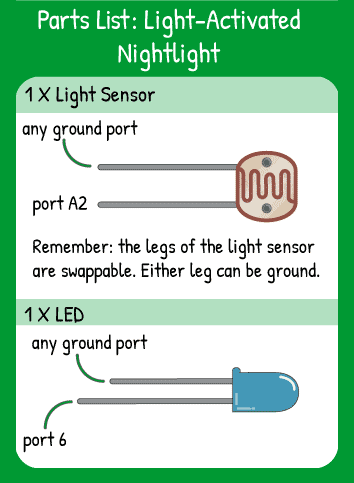Light Activated Nightlight
Step 1 - Build the Project
Use a light sensor to trigger an LED on or off based on the light in your environment.
Step 2 - Upload the Code
Step 3 - Read the Walkthrough
In the setup() section of the code, set the light sensor as an INPUT_PULLUP with pinMode(). This way, a dark room will send a value near 1000 to the Maker Board and a light room will send a value near 0.
Next, set the LED pin as an OUTPUT in the code so it receiving instructions from the code, not trying to send data in to the code.
The loop() contains an if-else statement. Your code will make a decision by asking the question "Is the analogRead(A2) value higher than 300?". If it is, the code between the curly braces { } will run, turning pin 6 HIGH.
The else statement is only checked if the 'if' statement is false. You can also think of it as an 'otherwise' statement. If the analogRead(A2) is not above 300, pin 6 is written LOW, turning off the LED. There you have it!


